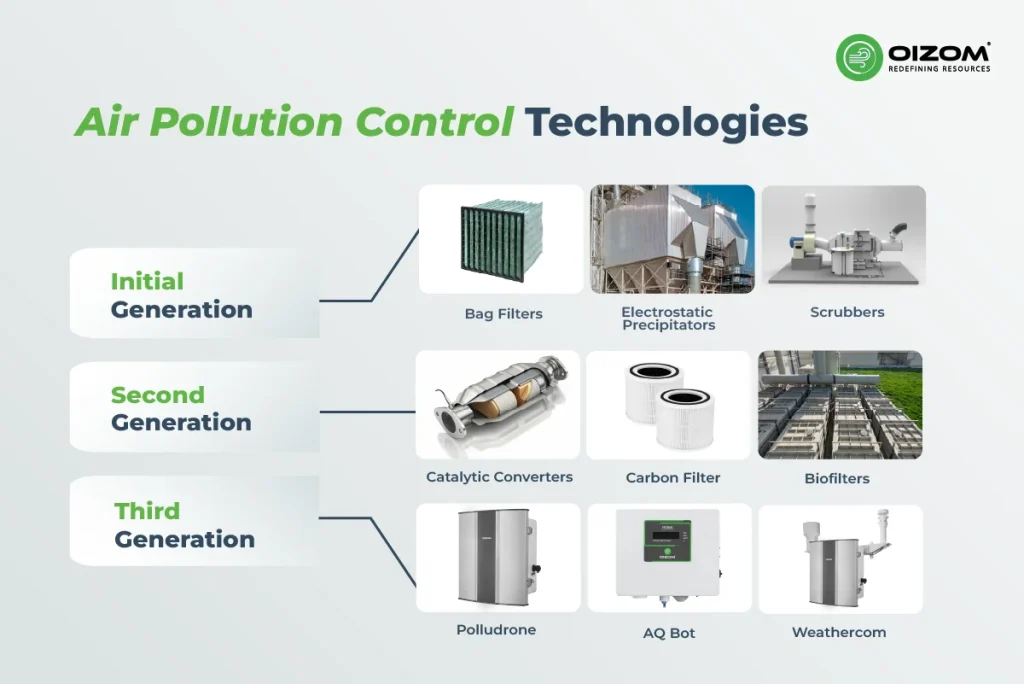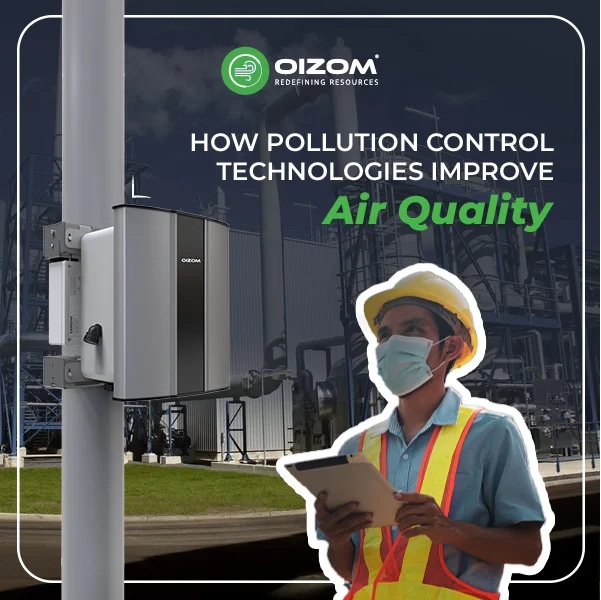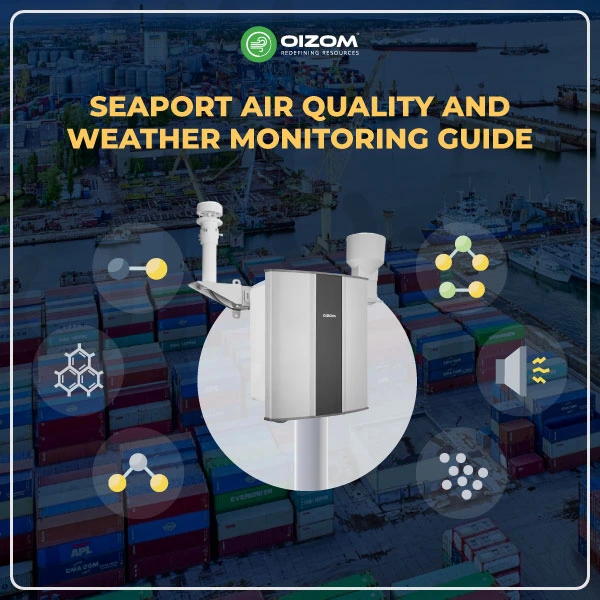Summary
Air pollution is a growing global concern that impacts human health, ecosystems, and economic productivity. Pollution control technologies offer practical solutions, ranging from traditional filters and scrubbers to advanced, real-time monitoring systems. These tools, in addition to reducing harmful emissions, also support healthier communities, protect natural ecosystems, and enhance overall environmental resilience. By learning about the types of pollutants, technologies available, and the role of monitoring, industries and policymakers can make thoughtful decisions to improve air quality. Ultimately, effective pollution control is a joint effort that combines innovation, responsibility, and data-driven strategies to create cleaner, safer air for all.
How Pollution Control Technologies Improve Air Quality?
Air pollution is one of the most significant environmental challenges of our time. It has a tremendous impact on both the environment and human health. In recent years, there has been a growing recognition of the importance of technology in reducing air pollution. What tools can be used to control air pollution, and what role do they play in mitigating the problem? Air contaminants are many, with varying physical and chemical properties and various sources. Common pollutants include dust, soot, ash, carbon monoxide, sulfur dioxide, nitrogen oxides, hydrocarbons, chlorofluorocarbons (CFCs), lead compounds, asbestos, cement dust, pollens, and radioactive rays.
Air pollution control techniques are used to reduce the gaseous & particulate emissions of harmful substances that can affect human health and the environment.
Therefore, a good understanding of the pollutants and their sources is necessary before implementing and applying a particular control technology to any specific situation. Each technology is designed to reduce pollutants at the source, transform harmful emissions into less hazardous forms, or remove them from the environment. They help to prevent respiratory and waterborne infections by reducing air and water pollution. Effective soil and noise pollution management methods maintain ecosystem integrity and promote community well-being, ultimately leading to a healthier planet. This blog will discuss pollution control technologies related to air, water, soil, and noise pollution.
The Growing Need for Pollution Control Technologies
In recent years, the need for pollution control technologies has increased exponentially as air pollution has evolved from a local nuisance into a global crisis. Industrial, urban sprawl expansion, and a surge in vehicle use have led to record levels of emissions. The impacts now extend beyond respiratory issues and hazy skylines to reduced agricultural yields, stressed ecosystems, climate instability, and even reduced economic productivity. In short, pollution today touches nearly every part of human and natural life.
Fundamental activities also fuel this growing need. A rising population requires more resources, which in turn fuels industrial output and energy consumption. The key engines of growth, manufacturing, transportation, and energy, also contribute substantially to air pollution. As a result, the strain is felt across multiple aspects: public health systems are burdened due to pollution-related illnesses, economies are losing billions due to reduced productivity, and ecosystems struggle to sustain biodiversity under toxic air conditions.
Conventional practices and natural recovery cycles fall short in counterbalancing this surge in demand. Centuries of industrial activity and overuse have exhausted nature’s capacity to absorb and repair the damage on its own. Rain and wind can disperse pollutants, while forests can absorb carbon; however, the extent of today’s emissions exceeds natural defenses. The gap between increasing pollution and declining natural resilience makes advanced pollution control technologies extremely important for the future.
Air Pollution Control Technologies Explained in Simple Terms

Air pollution control technology refers to equipment and processes designed to reduce the levels of harmful materials emitted into the atmosphere. These technologies have evolved, with each new generation refining the previous one to address the increasing complexity of pollution problems.
The initial generation of technologies was generally aimed at collecting pollutants once they were generated. Consider bag filters, electrostatic precipitators, and scrubbers employed by industries to trap dust or absorb gases before they are emitted into the air. These had the effect, but were mostly reactive; they operated after pollution had already occurred.
The second generation introduced developments in efficiency and specialization. Catalytic converters, carbon filters, and biofilters have become increasingly prevalent. These technologies filtered the air, but mainly remained effective at the “end of the pipe,” minimizing pollution after it had already happened.
The third generation of innovative, sensor-based systems is those that don’t just control pollution but also help prevent it. By monitoring air quality in real-time, these technologies provide data that enables industries, cities, and policymakers to act quickly and proactively. With these, decision-makers can identify hotspots, track emission patterns, and implement targeted measures without waiting for pollutant levels to rise. By doing so, sensor-based solutions revolutionize pollution control from a reactive measure to a proactive approach for cleaner air.
The Role of Air Quality Monitoring in Making These Technologies Work
Pollution control technologies, whether filters, scrubbers, or catalytic converters, can work effectively when guided by accurate information. This is where air quality monitoring turns into the key enabler. By tracking pollutants in real-time, monitoring systems create a feedback loop that ensures control measures are not only installed but also work as intended.
Monitoring is central to the entire system. It detects when pollutant levels spike, signals inefficiencies in devices, and highlights areas where additional action is needed. Without this constant data pipeline, even the most advanced technologies may operate at a disadvantage, leading to resource waste or inadequate protection.
At a larger scale, monitoring ensures compliance with environmental standards and helps authorities track progress toward cleaner air. It transforms pollution control from a static process into a flexible one, where decisions are made based on real information rather than assumptions. This way, air quality monitoring is not just secondary, but the foundation that makes all other pollution control technologies truly effective.
The Wider Benefits of Air Pollution Control Technologies
For industries, using air pollution control technologies is no longer merely a matter of compliance; it also enhances operations. Cleaner emissions lead to safer work environments and healthier workers, resulting in fewer absences and improved productivity. Control technologies for dust, gases, and volatile compounds also provide easier compliance with increasingly stringent environmental regulations, preventing companies from incurring expensive fines and disruptions.
Aside from short-term health and compliance benefits, these solutions enhance process efficiency by optimizing resource utilization and reducing waste. This results in reduced long-term costs, while making the company a responsible actor in its industry. At a time when environmental performance is becoming closely linked to business reputation and competitiveness, the advantages of air pollution control technology extend far beyond cleaner air; they also support industrial robustness and future-proofing.
How to Decide Which Technology Fits Your Needs
Selecting a suitable pollution control technology begins by identifying the type of pollutants an industry generates. For companies dealing with dust or particulate emissions, technologies such as bag filters, electrostatic precipitators, or cyclone separators are often the most effective. Where toxic gases such as SO₂ or NOx are the primary concern, scrubbers and catalytic converters are the most appropriate solutions. In situations where volatile organic compounds (VOCs) or odors are of concern, activated carbon filters or biofilters can offer specific relief.
The choice isn’t solely determined by the pollutant, but also by the level of emissions and the mechanisms involved. A large cement plant may require heavy-duty air filtering systems, but a small-scale plant may employ a more straightforward control technique. That’s where air quality monitoring system comes in. By understanding what pollutants are and in what quantities, monitoring enables industries to align the appropriate technology with their specific issues, providing both efficacy and efficiency.
Conclusion
Air pollution remains a widespread and often overlooked threat to human health, ecosystems, and economic productivity. Addressing this challenge requires an extensive and integrated approach that combines effective pollution control technologies, proactive monitoring, and best practices from both industries and communities.
By adopting diversified strategies that prevent emissions where possible, adopting advanced treatment technologies, and ensuring accountability, society can notably reduce the harmful effects of air pollution. These efforts not only protect public health but also the natural ecosystems and improve overall environmental resilience. Addressing air pollution is a shared responsibility, and through collective action, we can create a cleaner, healthier, and more sustainable future for all.
FAQs
Industries such as power plants, cement manufacturing, steel production, and chemical processing see the biggest benefits. These sectors generate high emissions, and installing control systems greatly reduces their environmental impact.
Yes. Urban areas use technologies like air quality monitoring networks, cleaner fuel systems, and emission filters on vehicles. These steps help reduce smog, respiratory illnesses, and improve overall urban air quality.
Absolutely. Many governments set strict air quality standards. Using technologies like scrubbers, filters, and continuous monitoring ensures industries stay compliant while protecting public health.






